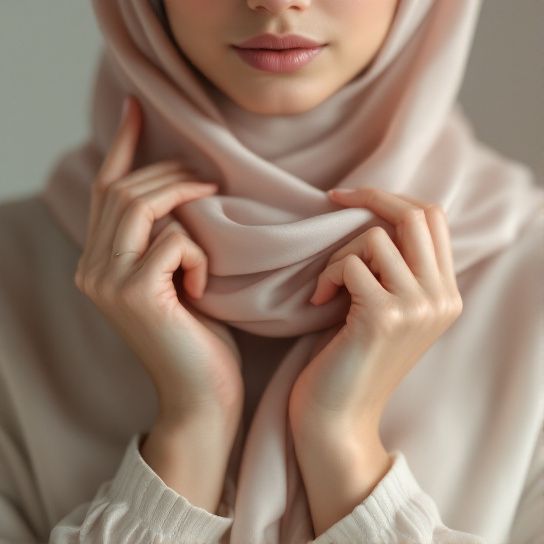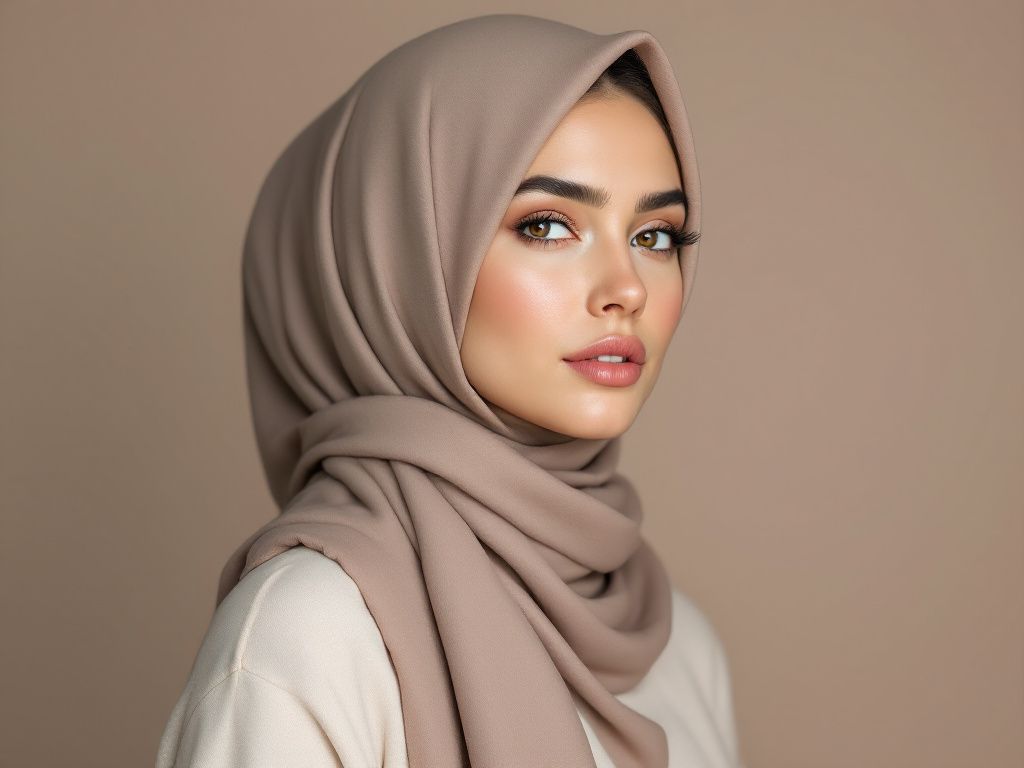Ramadan Style Collection: Finding Your Perfect Modest Look

Ramadan is just around the corner and one of the common questions I hear is, “How can I put together a modest hijab fashion collection that’s both stylish and comfortable?” It’s like trying to solve a puzzle – balancing faith, comfort, and style. But don’t worry, we’re going to break it down together.
Why Does Modest Fashion Matter During Ramadan?
First things first, let’s talk about why modest fashion, specifically modest is an importa, plays an essential role during this holy month. Ramadan is an important time of spiritual reflection, and for many, it includes dressing in a manner that aligns with these values of humility and respect. But here’s the thing, maintaining this balance between modesty and fashion can sometimes feel a bit tricky. Can you relate to that?
Let’s make it simple. Modest fashion during Ramadan isn’t about limiting your style; it’s an opportunity to explore creative and beautiful ways to express your identity while staying true to your beliefs. And, yes, you can still look amazing!
Building Your Ramadan Wardrobe
Let’s dive into some practical steps to put together your very own Ramadan style collection.
Step 1: Consider the Fabrics
Choosing the right fabric is half the battle won. During Ramadan, especially if it’s during the warmer months, comfort should be a top priority. Trust me; a good fabric can make all the difference.
- Cotton and Linen: These are natural, breathable fabrics ideal for warm weather.
- Lightweight Silk: Adds an element of elegance and is perfect for special gatherings.
- Jersey Fabrics: Great for everyday wear due to their comfort and stretchability.
Step 2: The Hijab Collection

Let’s not overlook the hijab since it’s the crown of modest hijab fashion. Your Ramadan hijab collection should consist of versatile pieces in solid colors and prints. Here’s why:
- Neutral Colors: Easy to pair with everything. Think whites, blacks, beiges.
- Pastel Shades: Perfect for a softer, more delicate look.
- Statement Prints: For those days when you want to make a subtle but bold statement.
Try mixing and matching to keep your look fresh, yet cohesive. The trick is to choose hijabs that complement not only your outfit but also your mood and occasions of the day.
Step 3: Key Wardrobe Pieces
All right, you’re probably wondering, “What exactly should I include in my wardrobe?” Let’s break it down into essential pieces:
- Maxi Dresses: Flowy and elegant, a staple for modest dressing.
- Kaftans: Perfect for special occasions or Taraweeh prayers due to their versatility and comfort.
- Palazzo Pants: Roomy and stylish, they can be paired with longer tunics for both comfort and class.
Create a mix-and-match wardrobe so you can easily transition from the mosque to family gatherings. A little accessory can elevate the look, so don’t hesitate to play around with belts, jewelry, or a chic handbag.
Step 4: Color Palette
One understated part of style is color, and during Ramadan, you might lean towards a more refined palette that echoes tranquility. Incorporate:
- Soft Whites and Creams: To reflect peace and purity.
- Rich Earthy Tones: Connects with the spiritual side by embracing the natural world.
- Muted Metallics: Just a hint, for a touch of luxury without being flashy.
Again, feel free to mix these shades with other colors in your wardrobe. The key is moderation and finding balance in modest hijab fashion.
Step 5: End of Ramadan = Self-Reflection Time
By the time Eid rolls around, most of us would have gone through a fascinating style journey. You’ll notice what works best for you and what doesn’t. Reflect on:
- What Options Were the Most Comfortable?: Maybe those palazzo pants became your favorite.
- Which Pieces Made You Feel Most Like Yourself?: Often, that’s where your style lies.
It’s all about finding that sweet spot between modesty, comfort, and fashion.

Common Mistakes in Modest Hijab Fashion and How to Avoid Them
Even with the best intentions, mistakes can happen, and that’s completely okay. Here are a few common pitfalls and how to sidestep them:
1. Overcomplicating Layers
It’s easy to overdo the layering, especially with the diverse trends in modest fashion. Layers look chic in magazines but might not feel as practical in real life, especially when running daily errands or rushing to Iftar with family.
- Solution: Stick to lightweight fabrics for layering. Use thin camisoles or long-sleeve tops under dresses.
2. Ignoring Footwear Design & Comfort
Affordable and trendy footwear options like slip-on sandals can seem perfect, but overlooking comfort can make gatherings less enjoyable.
- Solution: Ensure they’re sturdy with padded soles. Comfort is key, especially when you’re spending hours on your feet for prayer or social functions.
3. Sacrificing Personal Style for Trends
With the plethora of influencers promoting various looks online, it can be tempting to blindly follow. But trends should resonate with your personal sense of style.
- Solution: Be selective. Adopt trends that fit your personality and comfort.
Pro Tips for Experimenting with Modest Fashion Styles

Ready to take your styling game up a notch? Here’s the secret sauce:
1. Try Layering Different Textures
Layering isn’t just about piling on clothes — it’s much more fun than that! Experiment with different textures like silk and linen combined or a cotton cardigan over a velvet dress. This will add depth and elegance to your look.
2. Don’t Shy Away from Patterns
Especially floral patterns. Use them in a hijab or as a blouse under a solid-color overcoat. They’re surprisingly versatile and can suit many occasions.
3. Play with Lengths and Proportions
For instance, try a maxi dress with a waistcoat or a shorter outer cloak if appropriate. These combinations can add that extra edge and show off creativity within the guidelines of modest hijab fashion.
And remember – styling is always personal. Your clothes are an extension of who you are.
Wrapping It Up: Reflect, Adjust, and Celebrate
We’re at the end of our conversation, but before you jump into creating your Ramadan collection, let’s recap. Take a good hard look at what you have and what you need to make the most comfortable, modest choices for you. Let this be the Ramadan when you express yourself in the way that feels most true and respectful to your beliefs.
As you curate your modest hijab fashion for Ramadan, keep in mind it’s about faith, creativity, and comfort coming together. Let every piece tell a story – your story. Happy styling and blessed Ramadan!
So, what will your Ramadan style collection look like this year? Let’s hear your ideas! There’s no right or wrong path, but plenty of exciting turns.
Frequently Asked Questions
How often should I wash my face mask to prevent maskne?
To prevent maskne, it is crucial to wash your face mask regularly. For fabric masks, wash them after every use, similar to how you would wash your underwear[2][3][4]. Disposable masks should be tossed after each use to prevent the buildup of bacteria and other contaminants[3][5>.
What type of skincare products are best for preventing maskne?
For preventing maskne, use skincare products that are oil-free or noncomedogenic. These products, such as gentle cleansers, moisturizers, and sunscreens, help prevent clogged pores and reduce the risk of acne. Look for products containing salicylic acid or benzoyl peroxide for their acne-fighting properties[1][3][4>.
How can I reduce friction and irritation caused by wearing a face mask?
To reduce friction and irritation, choose a mask that fits well and is made from breathable fabrics like cotton or bamboo. Loosen the mask straps, use pads under the straps, or consider a headband-style mask to minimize friction. Taking brief breaks to remove the mask and allow your skin to breathe can also help[2][3][5>.
What are some additional tips to prevent maskne while wearing a face mask?
In addition to regular mask washing and using the right skincare products, avoid touching your face, skip makeup or use noncomedogenic makeup, and moisturize your skin to keep it hydrated. Also, limit the use of active ingredients like retinol or benzoyl peroxide during the day when wearing a mask, and consider using a topical antimicrobial cream to prevent bacterial buildup[1][3][4>.
References


![[Sulwhasoo] First Care Activating Serum (Yoon Jo Essence)...](https://m.media-amazon.com/images/I/51q90IRTisL._AC_UL320_.jpg)



